“Why is wage growth low in Canada?” “Will housing prices keep going higher?” or, “Will a cap on international students lower rents?” These are some of the key themes RBC Economics & Thought Leadership’s Proof Point highlighted in the past year.
Growing in popularity since its launch two years ago, the publication’s ever-widening coverage spans inflation, immigration, and interest rates to budgets, trade, housing, and everything in between.
Here’s a look back at 10 of the most popular Proof Points in the past 12 months.
Why Canadians should care about government overspending
Big government budgets with big spending plans always raise the key question: Who’s going to pay for this? Any rise in funding costs eventually trickles down to businesses and households. Ahead of the federal budget in April 2024, economist Rachel Battaglia looked at why all Canadians have a stake in the Feds meeting their targets.
Are wages keeping up with the cost of living?
Wage growth in Canada has been unusually high, but it looks more modest when measured against surging inflation and labour shortages post-pandemic. Now, a softening jobs market and weak productivity are threatening Canada’s post-pandemic wage growth, wrote assistant chief economist Nathan Janzen.
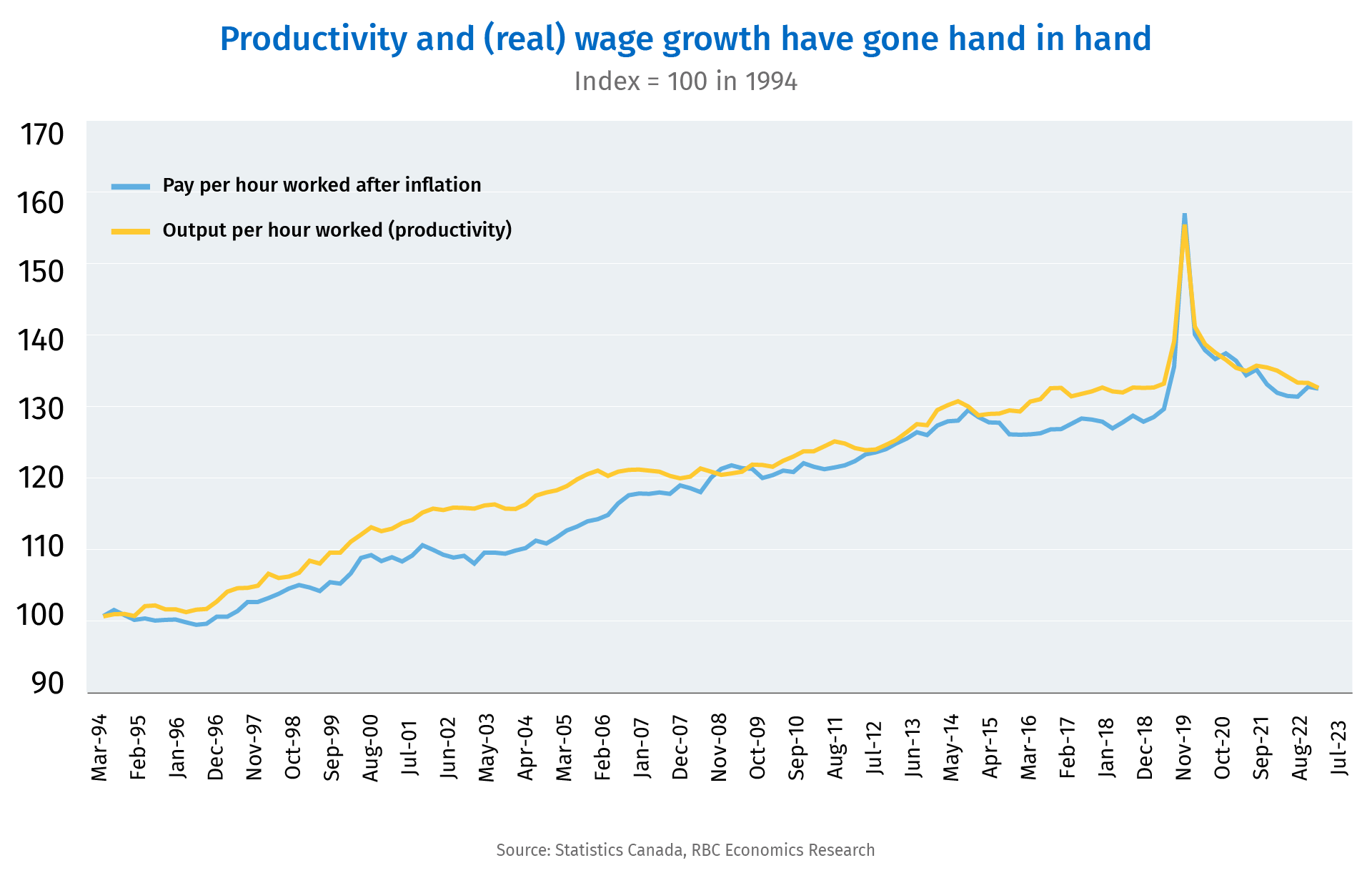
Who’s getting squeezed the most in the housing market?
With more than two-thirds (68%) of Canadian households being unable to buy a home—homeownership has never been more out of reach. Economist Carrie Freestone looked at how renters are devoting a greater share of their take-home income to housing costs and face higher hurdles to accumulating wealth than homeowners.
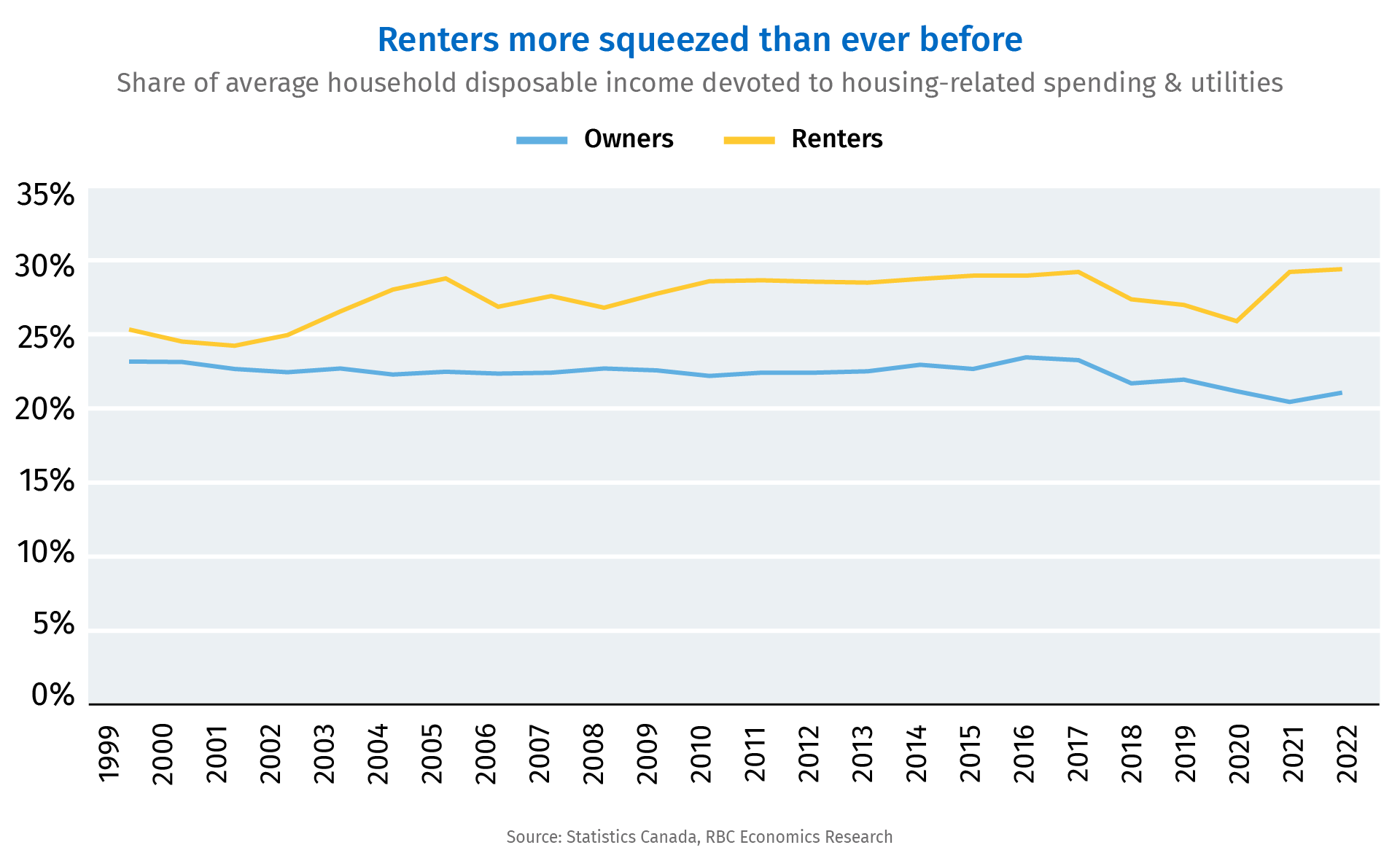
Will inflation rear its head again in Canada?
The Canadian economy’s performance lagging the United States since 2023 is unusual given close cross-border economic ties. Economist Claire Fan looks into why Canadian inflation is unlikely to pick up again like in the U.S., allowing the Bank of Canada to cut interest rates earlier than the U.S. Federal Reserve this year.
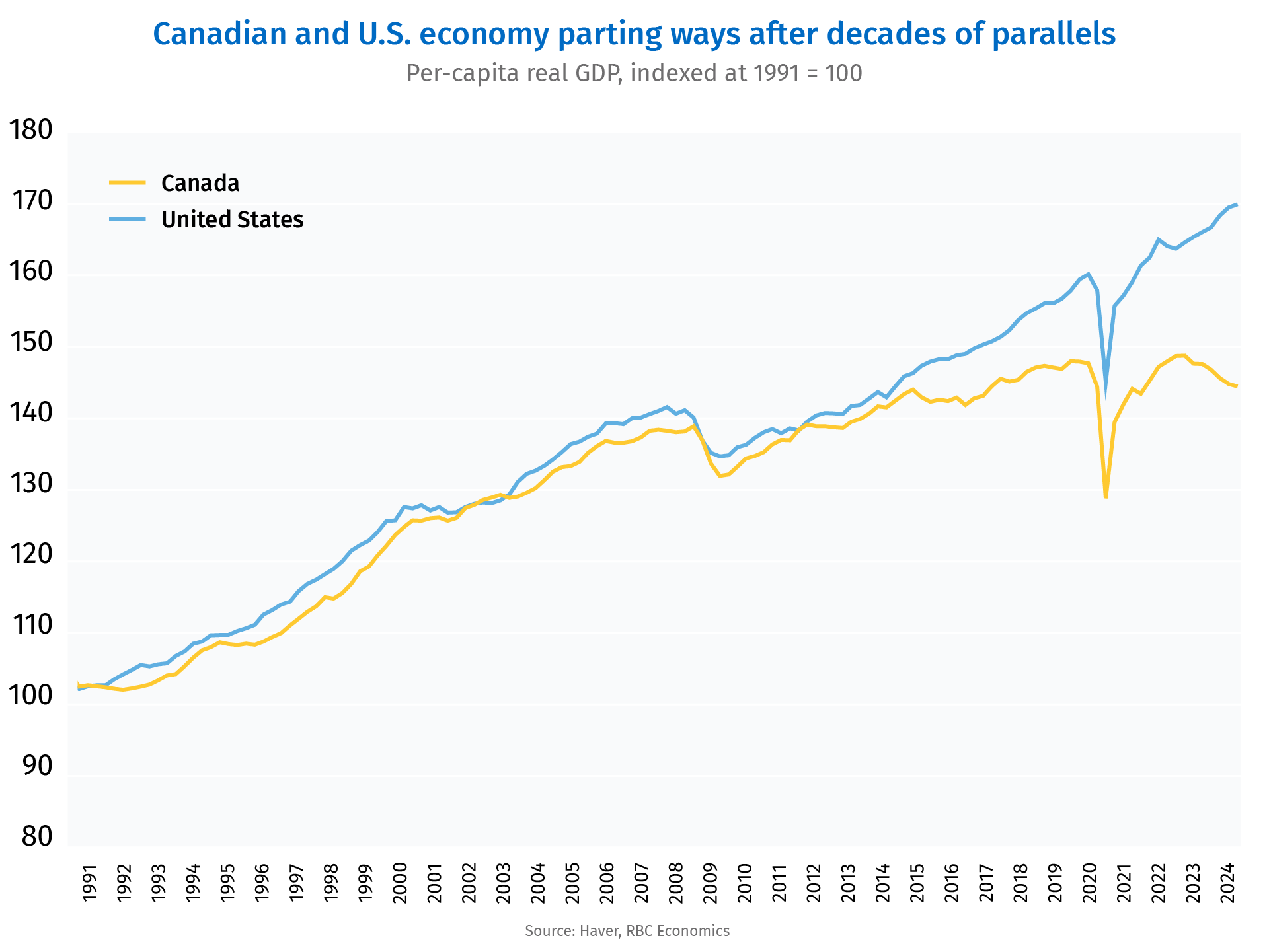
How much do immigrants contribute to the workforce?
Immigrants are outperforming their Canadian-born peers when it comes to labour force participation. That’s especially true for immigrant workers aged 55 and above, who have increasingly chosen to keep working and retire later. Economist Claire Fan examined how immigrants’ participation in the labour force surpasses those born in Canada and whether it’s helping mitigate demographic pressures.

Who will be the hardest hit by a downturn in the jobs market?
The magnitude and pace of Canada’s rising unemployment rate are consistent with what happened in previous recessions. But there isn’t a big surge in layoffs this time around. Instead, it’s taking more time to absorb new workers into the workforce as the population grows rapidly, leading to longer job searches for students and new graduates. Economists Carrie Freestone and Rachel Battaglia explain why students and new graduates are bearing the brunt of the labour market downturn.

Will a weaker loonie prevent the BoC from cutting interest rates?
The Canadian dollar’s performance has been wobbly in the wake of the BoC’s aggressive interest rate hikes early on in the tightening cycle. Surging population growth has propped up economic activity, but this is masking underlying softness on a per-capita basis. Economists Nathan Janzen and Claire Fan explained why a weaker Canadian dollar won’t necessarily derail BoC interest rate cuts.
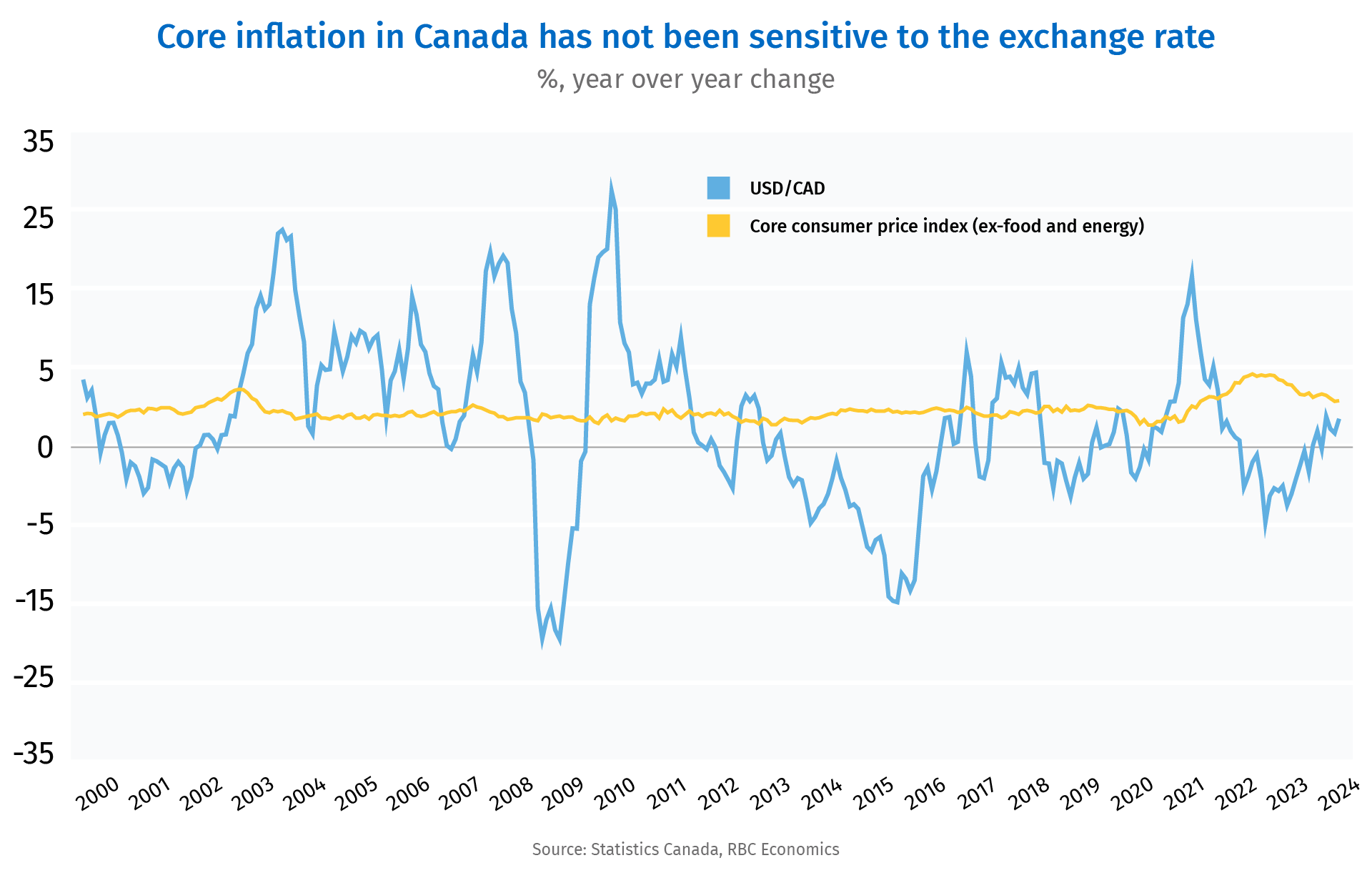
Why is U.S. consumer spending still so strong?
While Canadian households were pulling back on spending, U.S. households drew down savings, fuelling the economy at the back end of 2023. Americans are also less sensitive to higher interest rates as it takes longer for rate hikes to pass through to households than in Canada. Economist Carrie Freestone outlined why U.S. consumer spending has been more resilient than its northern neighbour.
How much of an impact will a slowdown in China have on Canada?
Canada has few direct trade links with China, but certain products, particularly minerals, are exposed to China’s sputtering economy. Claire Fan looked at how slower Chinese demand could help ease inflation in Canada, but that would also clip revenue growth in Canada’s commodity-producing regions.
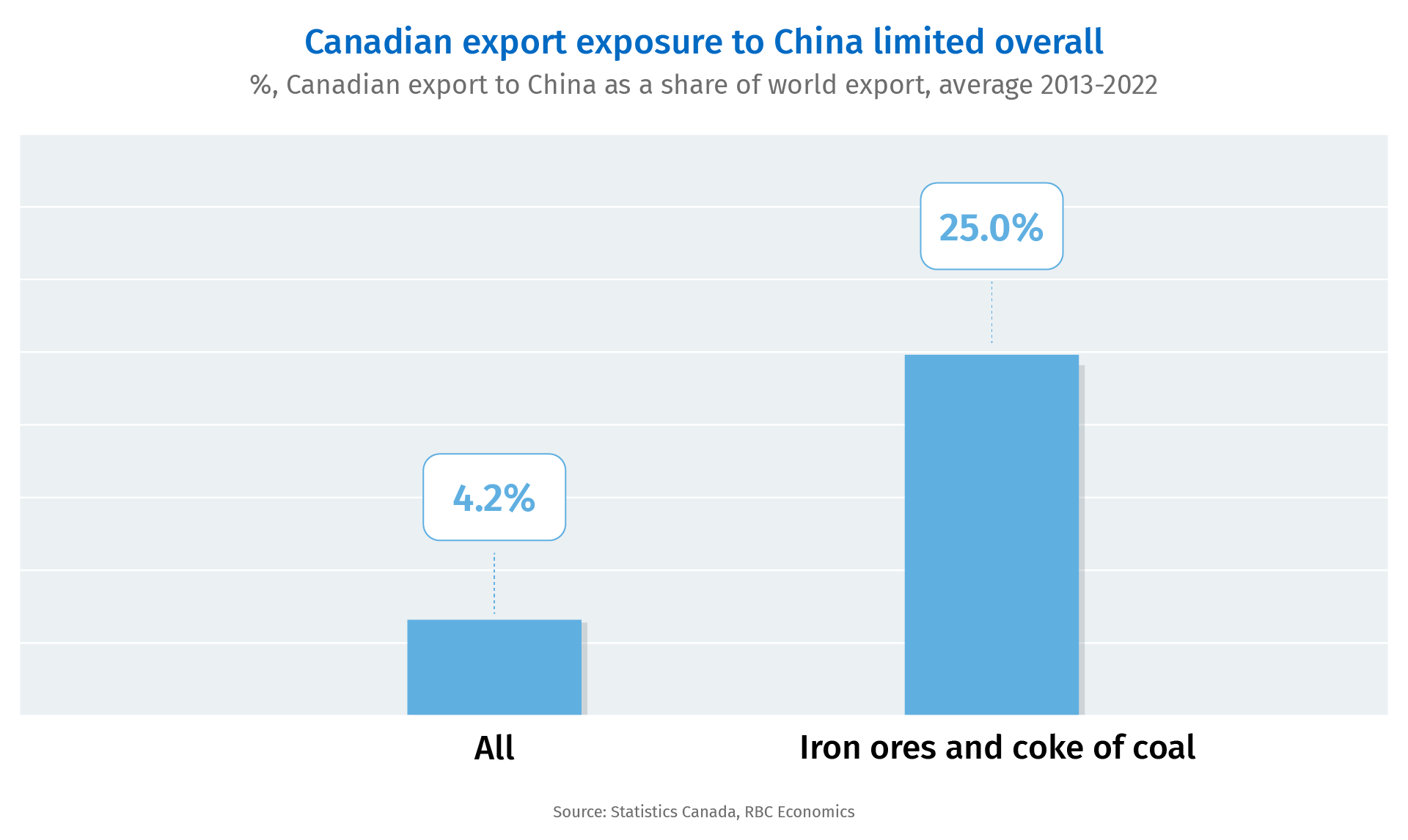
Will the international student cap make it easier to find a place to rent?
Economist Rachel Battaglia examined how the increase in rental units demanded by international students could fall by roughly half in 2024, because of the new cap on international study permits. But here’s why the international student cap won’t immediately cut rental demand in Canada.
Rajeshni Naidu-Ghelani, Managing Editor, Economics & Thought Leadership
This article is intended as general information only and is not to be relied upon as constituting legal, financial or other professional advice. The reader is solely liable for any use of the information contained in this document and Royal Bank of Canada (“RBC”) nor any of its affiliates nor any of their respective directors, officers, employees or agents shall be held responsible for any direct or indirect damages arising from the use of this document by the reader. A professional advisor should be consulted regarding your specific situation. Information presented is believed to be factual and up-to-date but we do not guarantee its accuracy and it should not be regarded as a complete analysis of the subjects discussed. All expressions of opinion reflect the judgment of the authors as of the date of publication and are subject to change. No endorsement of any third parties or their advice, opinions, information, products or services is expressly given or implied by Royal Bank of Canada or any of its affiliates. This document may contain forward-looking statements within the meaning of certain securities laws, which are subject to RBC’s caution regarding forward- looking statements. ESG (including climate) metrics, data and other information contained on this website are or may be based on assumptions, estimates and judgements. For cautionary statements relating to the information on this website, refer to the “Caution regarding forward-looking statements” and the “Important notice regarding this document” sections in our latest climate report or sustainability report, available at: https://www.rbc.com/community-social- impact/reporting-performance/index.html. Except as required by law, none of RBC nor any of its affiliates undertake to update any information in this document.


